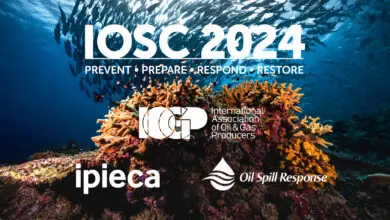
Oil spill surveillance planning guidance published
This month, IPIECA and IOGP released IOGP-IPIECA Report 644 – Oil spill surveillance planning guidance. This document has been developed to help operators navigate the steps involved in implementing and maintaining a surveillance programme during a response to an oil spill.
“Surveillance is an essential component of the overall oil spill response strategy, providing critical information needed to support decisions, optimize the response effort, and help to minimize and mitigate the impacts of a spill,” says Harvey Johnstone, IOGP’s Environment Director.
The guidance introduces six activity steps that guide the reader through how to develop and maintain a surveillance plan.
• Gather information requirements
• Identify and manage appropriate resources
• Develop tasking
• Handle the data inputs
• Communicate the gathered information appropriately
Intended to form the basis of a scalable surveillance strategy for use in a response situation, the guidance describes how a surveillance plan can be developed to support the management of a comprehensive surveillance programme through the collection of accurate and targeted information in a timely manner.



